American Children's Family Structure: Single-Parent Families
Family Profile No. 17, 2017
Author: Kasey J. Eickmeyer
Recent trends in nonmarital childbearing and divorce over the past half century have resulted in an increase in children living with single parents (Ellwood and Jencks, 2004). Single-parent families were the second-most common living arrangement of minor children in 2016, with just over 20 million children living with a single mother or father (U.S. Census, 2016). Using recent data from the 2016 Current Population Survey (CPS), this third and final profile in a series on children's family structure (see also FP-17-15 on two-biological parent families and FP-17-16 on stepparent families) focuses on children living with single parents.
- About one-quarter (24%} of children were living with a single parent in 2016 (Figure 1).
- Of the 24% of children living in a single-parent family, only 3% were living with a single father.
Figure 1. Share of Children Living with Single Mothers or Single Fathers, 2016
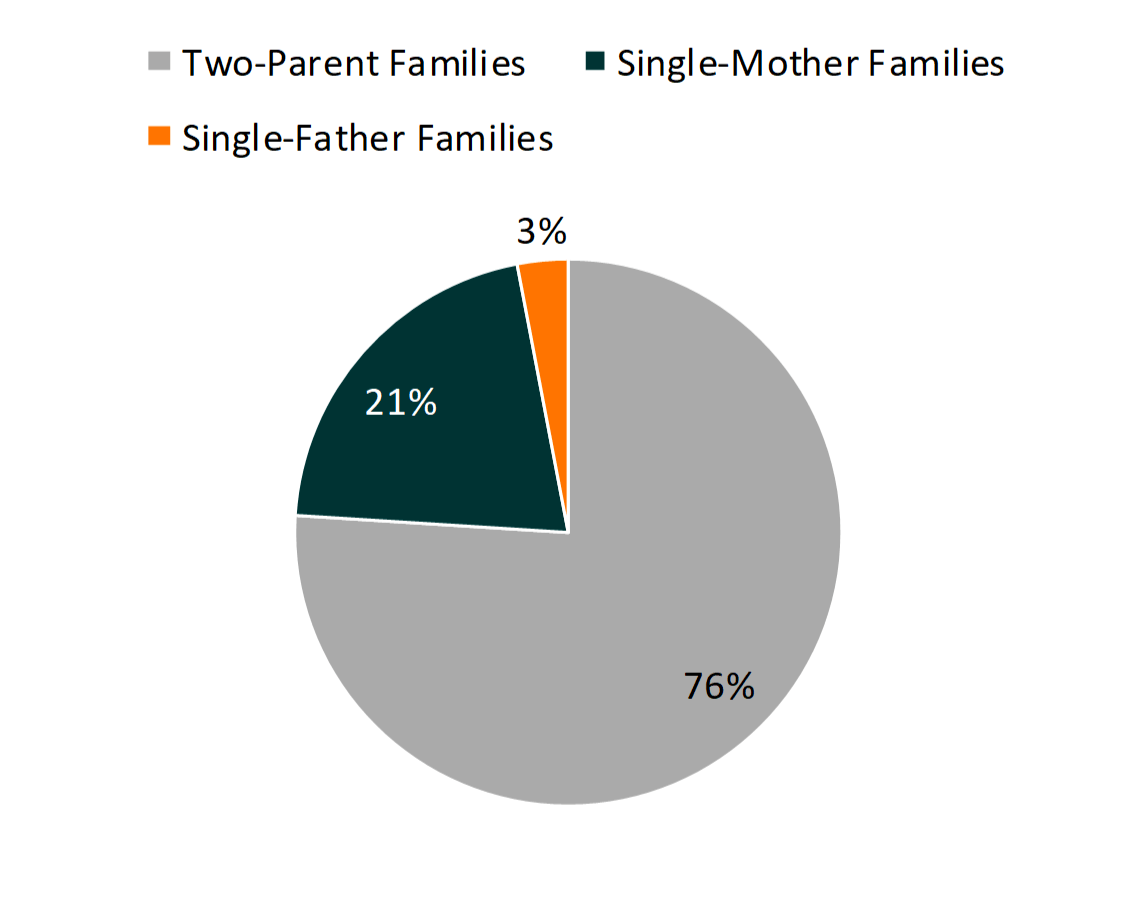
Parental Educational Attainment
- A slight majority of all children living in a single parent family had parents who reported having some college education or more in 2016.
- Fewer single mothers than fathers reported having at least a Bachelor's degree (18% compared to 23%).
- The share of single mothers without a high school degree was slightly higher than single fathers.
Figure 2. Variation in Parental Educational Attainment Among Children in Single-Parent Families, 2016
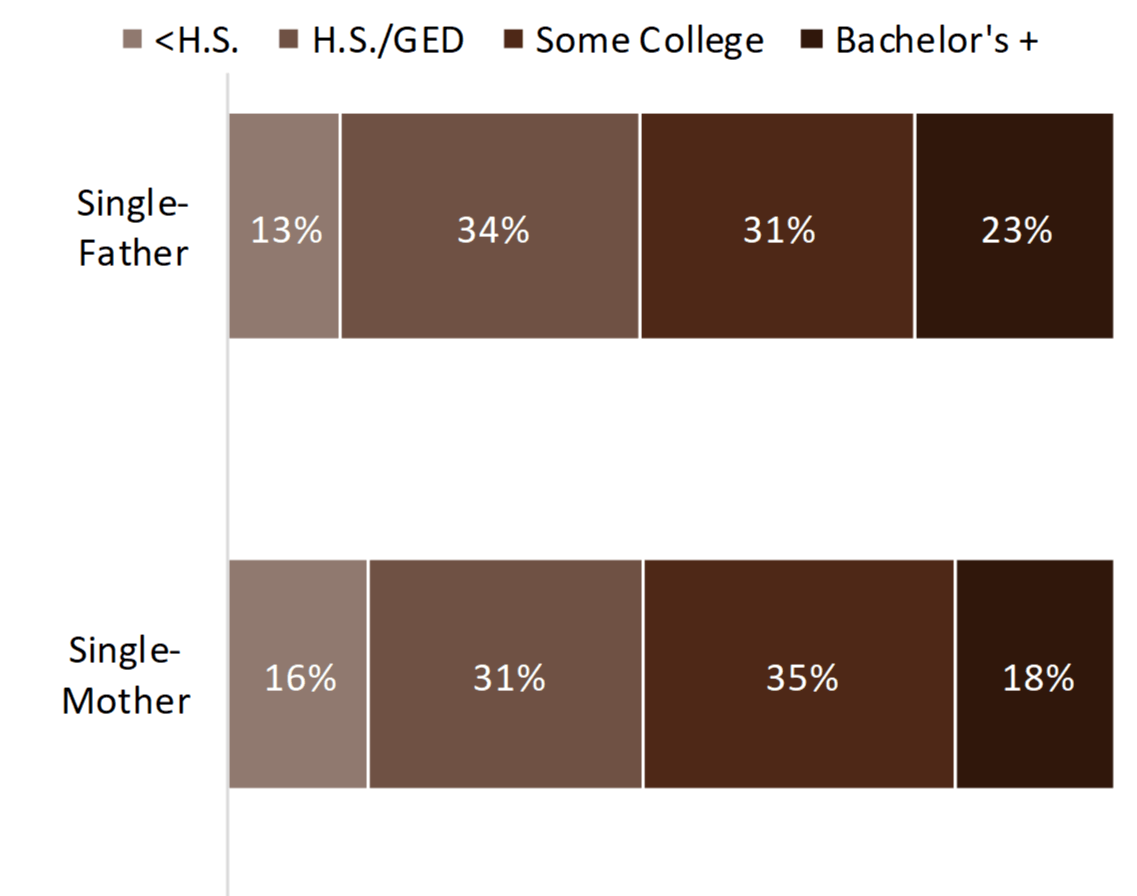
Racial & Ethnic Composition
- In 2016, the racial and ethnic composition of children living in single- mother and single-father families differed.
- Almost equal shares of children living with single mothers identified as White or Black (33% and 32%), while a majority of children living with single fathers identified as White (56%).
- Over twice as many children living with single mothers identified as Black than children living with single fathers.
Figure 3. Variation in Racial & Ethnic Composition Among Children in Single-Parent Families, 2016
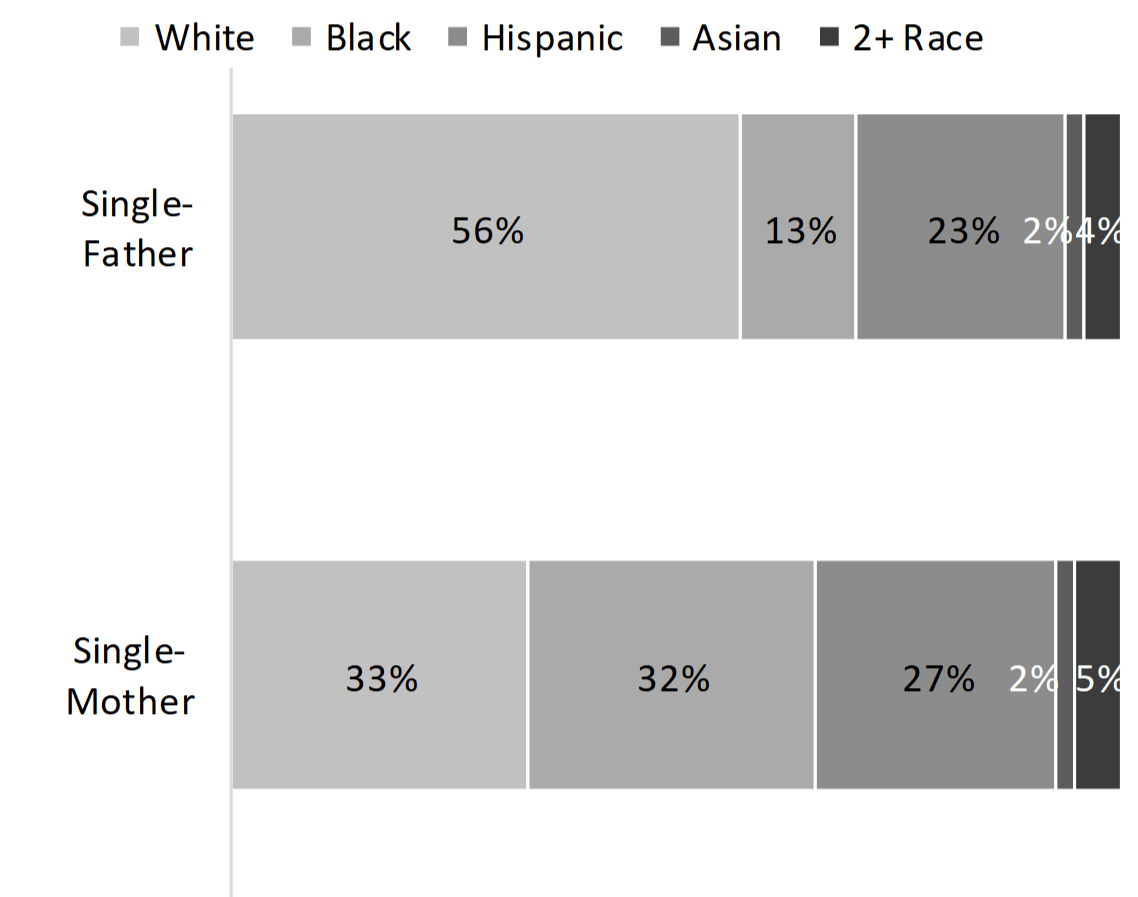
Measures of Poverty
- The majority of children in single-parent families were living above the official poverty line in 2016.
- Compared to children living with single fathers, the share living in poverty (based on the official indicator) in single-mother families was twice as high (19% and 39%, respectively).
- Using the supplemental poverty measure (U.S. Census Bureau)-which accounts for noncash benefits and is represented by the dotted line-the share of children in single-mother families living in poverty in 2016 fell to 31 %, while the share of children in single-father families living in poverty increased slightly to 22%.
Figure 4. Poverty (Official and Supplemental) Among Children in Single-Parent Families, 2016
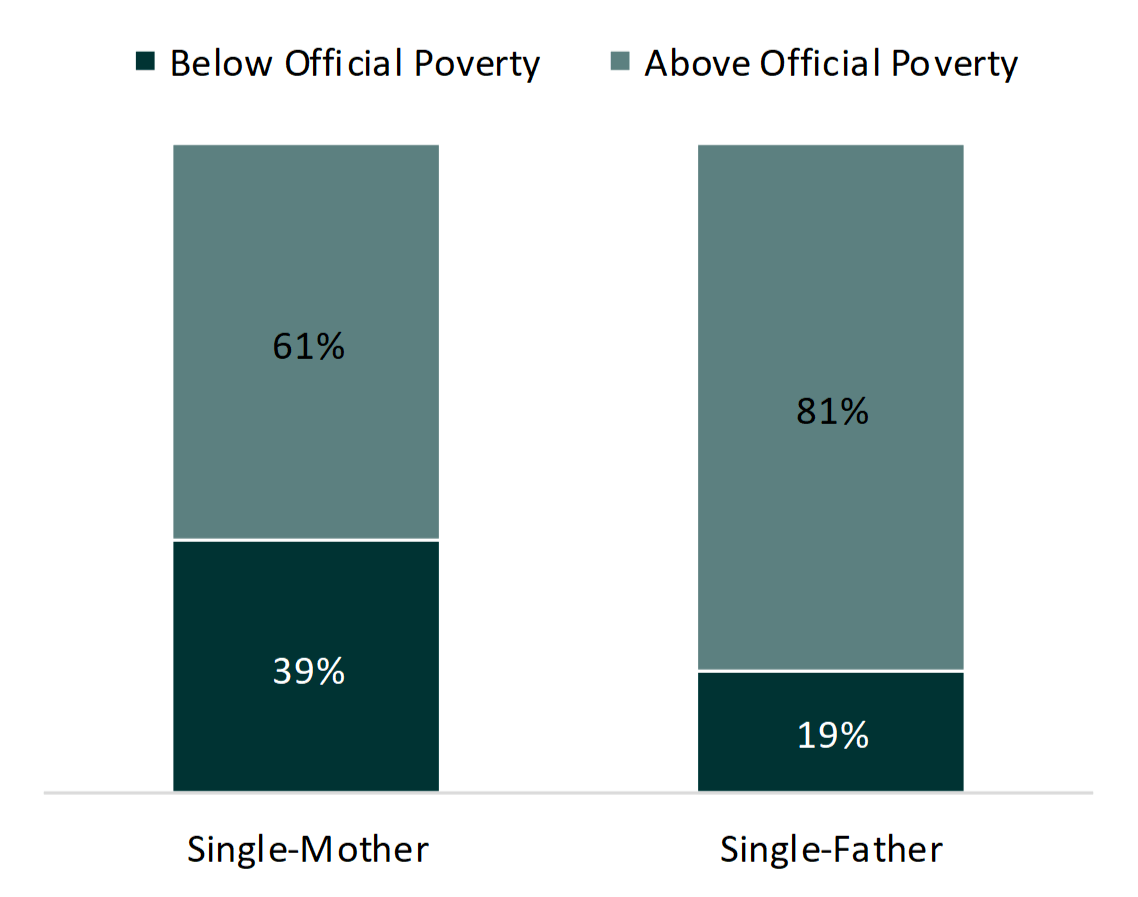
Health Insurance Coverage
- In 2016, the vast majority of children living with single parents were covered by health insurance. The levels were only slightly lower among single mothers than fathers.
- Just over one-third (35%) of children living with single mothers were covered by private health insurance, compared to about half (54%) of children living with single fathers. About three in five (59%) children living with single mothers were covered by public insurance.
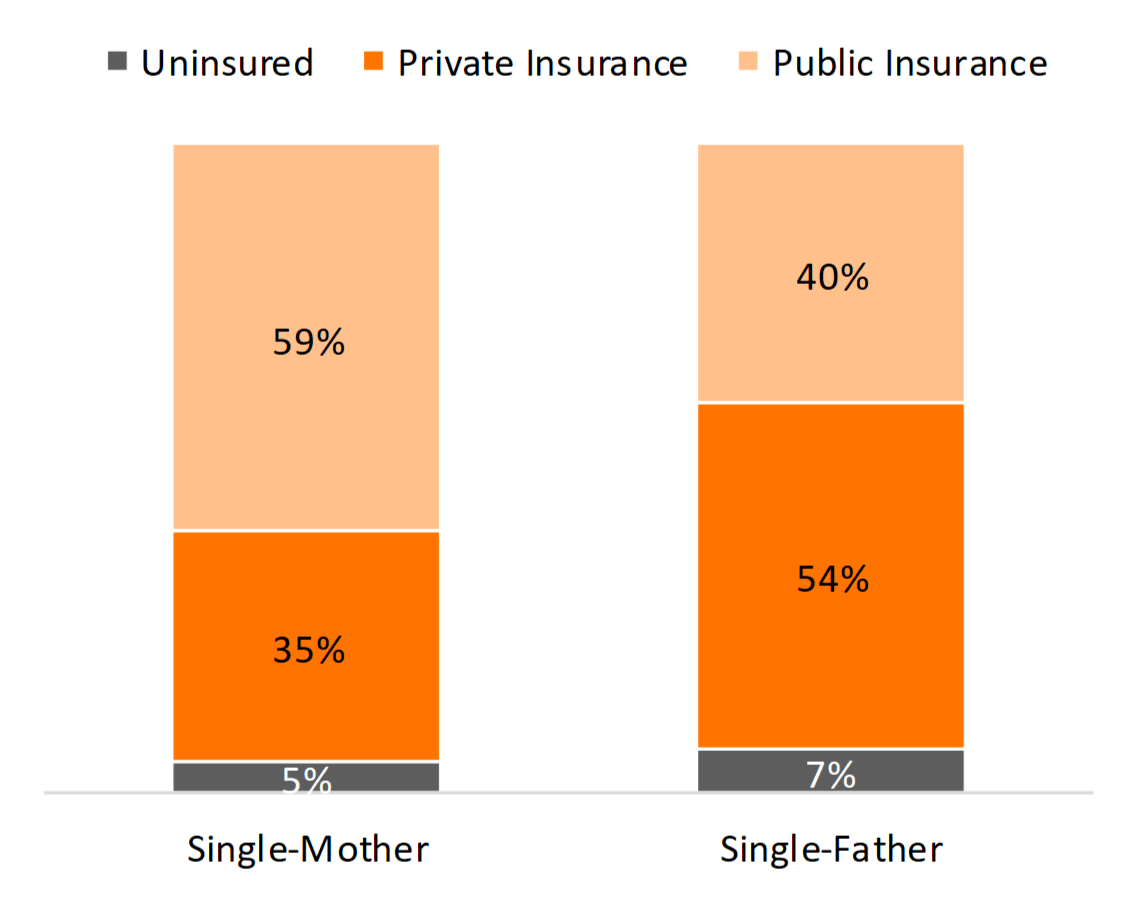
*For more information on the history of the poverty measure, please visit the United States Census Bureau's website link.
Data Sources
- Flood, S., King, M., Ruggles, S., and Warren, J.R. Integrated Public Use Microdata Series, Current Population Survey: Version 4.0 [dataset]. Minneapolis: University of Minnesota, 2015. http://doi.org/10.18128/D030.V4.0.
References
- Ellwood, D. T. and C. Jencks. (2004). The spread of single-parent families in the United States since 1960. D. P. Moynihan, L. Rainwater, and T. Smeeding (Eds.), The Future of the Family, Chapter 2. New York, New York: Russell Sage Foundation.
- U.S. Census Bureau. (2016). Living arrangements of children under 18 years old: 1960 to present, Table CH-1.
Suggested Citation
- Eickmeyer, K. J. (2017). American children's family structure: Single-parent families. Family Profiles, FP-17-17. Bowling Green, OH: National Center for Family & Marriage Research. https://doi.org/10.25035/ncfmr/fp-17-17
This project is supported with assistance from Bowling Green State University. From 2007 to 2013, support was also provided by the U.S. Department of Health and Human Services, Office of the Assistant Secretary for Planning and Evaluation. The opinions and conclusions expressed herein are solely those of the author(s) and should not be construed as representing the opinions or policy of any agency of the state or federal government.
Updated: 04/06/2021 02:09PM


